牛津译林版(2019)选择性必修第一册: Unit 4 Exploring poetry Welcome to the unit & Reading 课件(35张ppt)
文档属性
| 名称 | 牛津译林版(2019)选择性必修第一册: Unit 4 Exploring poetry Welcome to the unit & Reading 课件(35张ppt) | 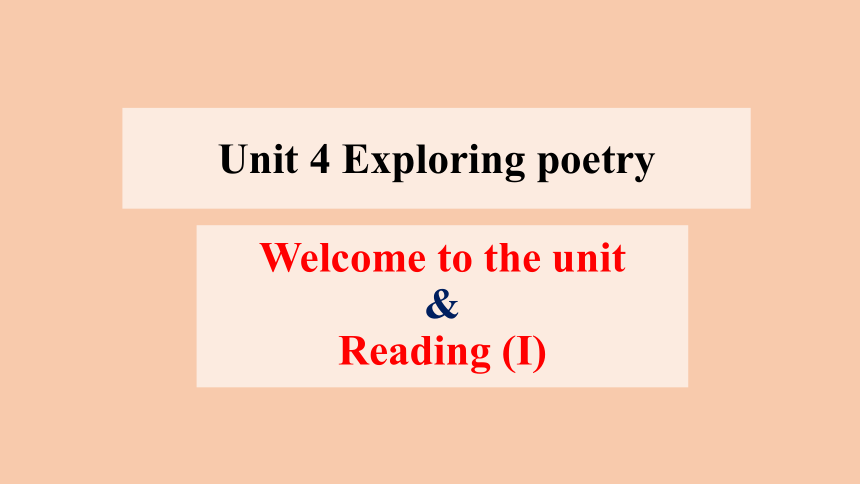 | |
| 格式 | ppt | ||
| 文件大小 | 18.3MB | ||
| 资源类型 | 教案 | ||
| 版本资源 | 牛津译林版(2019) | ||
| 科目 | 英语 | ||
| 更新时间 | 2022-11-05 18:55:40 | ||
图片预览


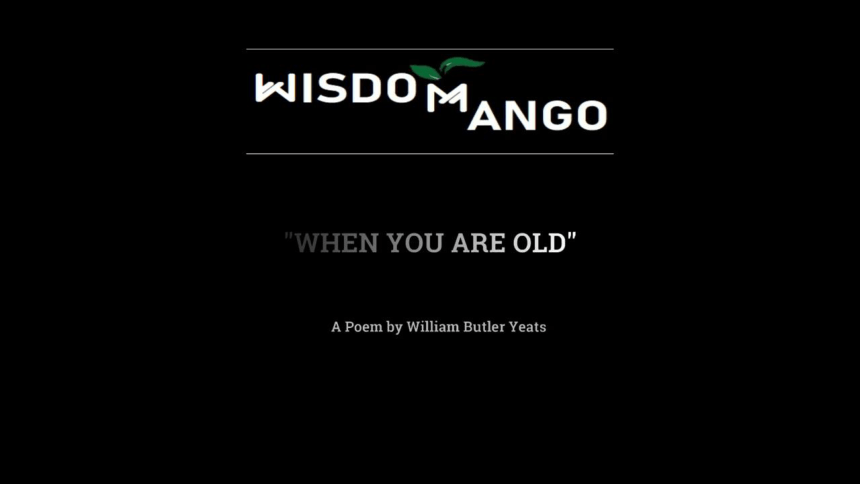
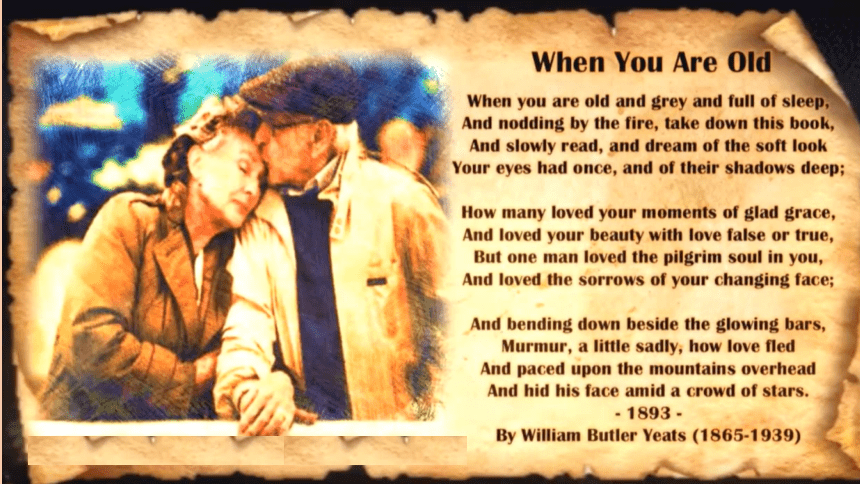
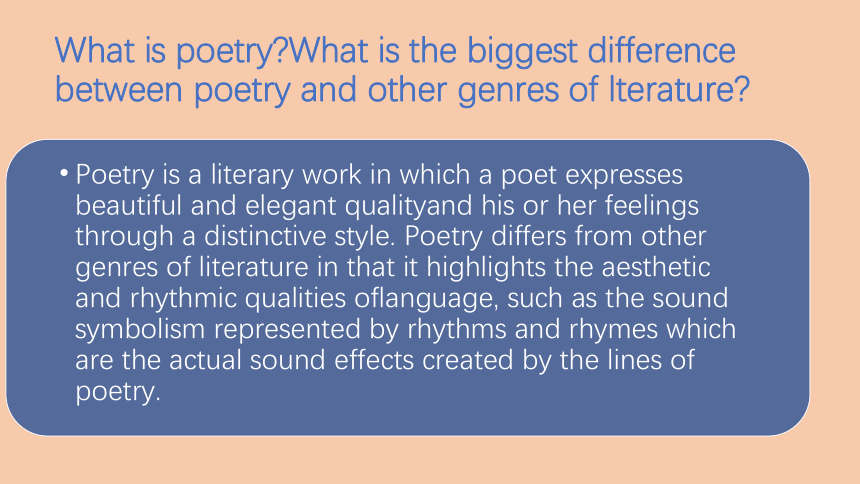

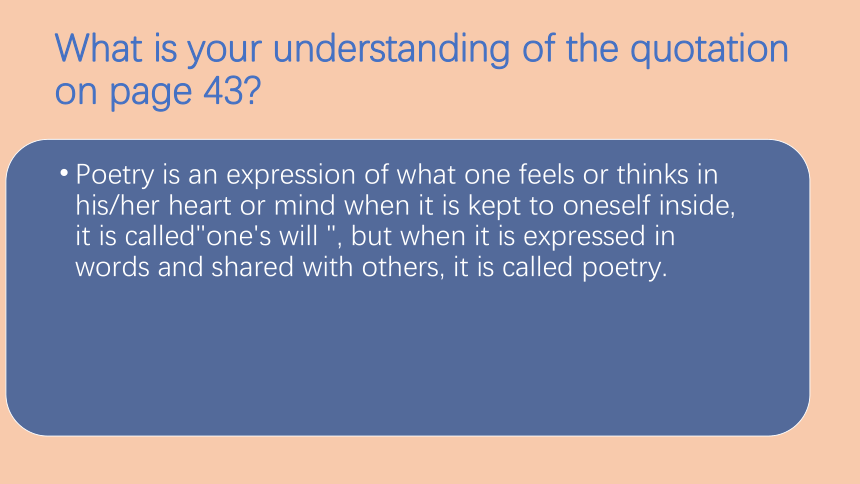
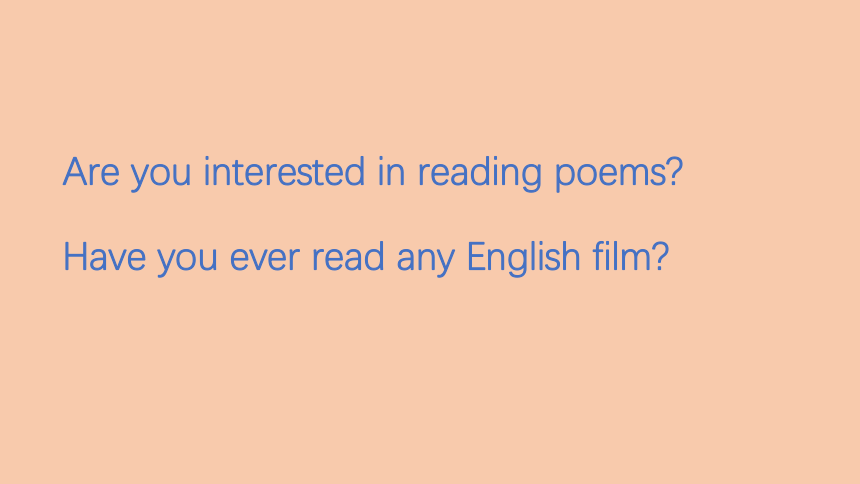

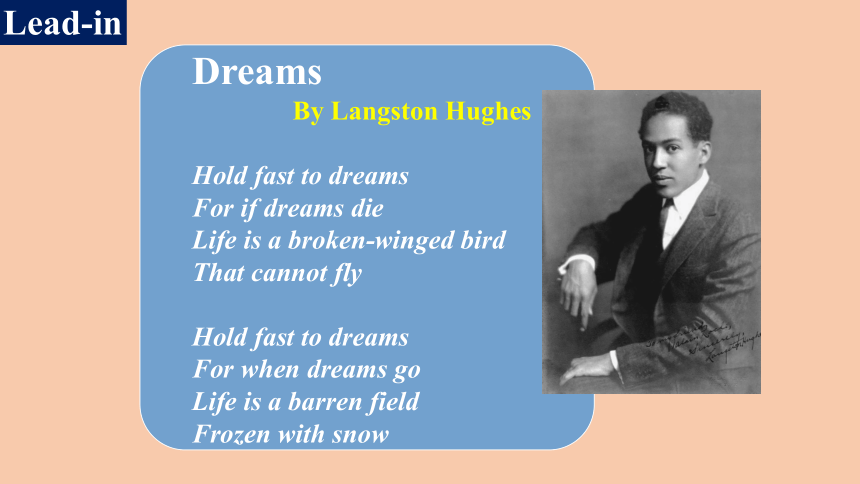
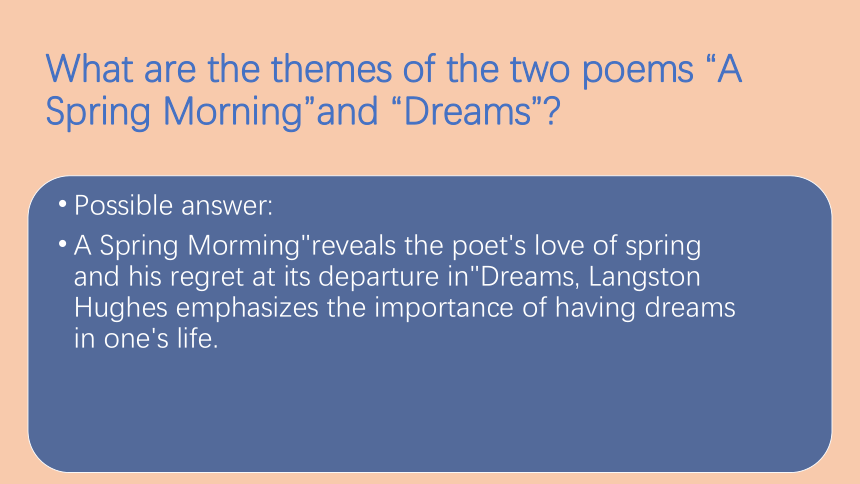

文档简介
Unit 4 Exploring poetry
Welcome to the unit
&
Reading (I)
What is poetry?What is the biggest difference between poetry and other genres of lterature?
Poetry is a literary work in which a poet expresses beautiful and elegant qualityand his or her feelings through a distinctive style. Poetry differs from other genres of literature in that it highlights the aesthetic and rhythmic qualities oflanguage, such as the sound symbolism represented by rhythms and rhymes which are the actual sound effects created by the lines of poetry.
Lead-in
Poetry is an expression of one’s will. What is kept in the heart is the will, but when expressed in words, it is poetry.
—“Preface to The Book of Songs”
诗者,志之所之也。
在心为志,发言为诗。
What is your understanding of the quotation on page 43?
Poetry is an expression of what one feels or thinks in his/her heart or mind when it is kept to oneself inside, it is called"one's will ", but when it is expressed in words and shared with others, it is called poetry.
Are you interested in reading poems?
Have you ever read any English film?
A Spring Morning
By Meng Haoran
This spring morning in bed I’m lying,
Not to awake till birds are crying.
After one night of wind and showers,
How many are the fallen flowers!
Translated by Xu Yuanchong
Lead-in
Dreams
By Langston Hughes
Hold fast to dreams
For if dreams die
Life is a broken-winged bird
That cannot fly
Hold fast to dreams
For when dreams go
Life is a barren field
Frozen with snow
Lead-in
Possible answer:
A Spring Morming"reveals the poet's love of spring and his regret at its departure in"Dreams, Langston Hughes emphasizes the importance of having dreams in one's life.
What are the themes of the two poems “A Spring Morning”and “Dreams”?
How do you like the two poems?
Welcome to the unit
What other poems or poets do you know about?
What other poems or poets do you know about?
What is your favourite poem?
Why do people read poems?
Poems create vivid pictures and tell stories by using language creatively. Readers enjoy the challenge of trying to understand the poet’s intention in writing a happening during the time when it was written. Readers can look at the poem’s form and literary devices to see what the poet saw. By reading it aloud, they can feel the rhythms and rhymes of the poem as well as the poet’s emotions.
Pre-reading
(1)_______________
Global Reading: scan the lecture transcript and complete the chart below.
Poetry
(2)_______________
Follow your ears and ask
“(3)________________”
Approach the poem as
(4)___________________________.
Be (5)________________.
Remember that it is not necessary to
(6)____________________________.
Sound
Sense
How does it sound?
an explorer in an unfamiliar lanscape
patient
fully understand a poem to appreciate it
How is poetry different from other types of literature?
2. What aspect should you pay special attention to when you read a poem aloud?
3. What characteristics can you find when you analyse its sound?
Detailed Reading: read Para. 1 & 2 and the first poem and answer the questions.
How is poetry different from other types of literature?
More than other types of literature, it usually implies a deeper meaning beyond the words on the page.
What aspect should you pay special attention to when you read a poem aloud?
The aspect of rhythm, repeated words, rhymes and other special effects.
Detailed Reading: read Pa. 1 & 2 and the first poem and answer the questions.
Detailed Reading: read Pa. 1 & 2 and the first poem and answer the questions.
What characteristics can you find when you analyse its sound?
Firstly, the words “Wind of the western sea” are repeated.
Secondly, there are several rhyming words: “low” rhyming with “blow” and “go”, “sea” rhyming with “me”.
Detailed Reading: read Para. 1 & 2 and the first poem and answer the questions.
Alfred, Lord Tennyson
(1809–1892)
More than any other Victorian-era writer, Tennyson has seemed the representative of his age. In his own day he was said to be—with Queen Victoria and Prime Minister William Gladstone—one of the three most famous living persons, a reputation no other poet writing in English has ever had.
Detailed Reading: read Pa. 1 & 2 and the first poem and answer the questions.
Sweet and low, sweet and low,
Wind of the western sea,
Low, low, breathe and blow,
Wind of the western sea.
Over the rolling waters go;
Come from the dying moon, and blow,
Blow him again to me,
While my little one, while my pretty one sleeps.
(From “Sweet and Low”
by Alfred Tennyson)
Read aloud and use the tip in paragraph2 to analyze its sound characteristics.
Detailed Reading: read Para. 3 and the second poem and finish the chart.
Approach the poem as if you were an _______ in an unfamiliar_________?
As you approach the poem, you should ask:
As you explore the poem, you should ask:
As you slowly explore your surroundings, you will
explorer
landscape
Who is talking? Who is being talked to? What is being described? Is there a sense of place? Are there other people or objects there?
What are the images?
What happens when they are put together?
start to ___________ that give you a greater _______________ of the poem.
dig up clues
understanding
What images come into your mind when reading it?
Detailed Reading: read Para. 3 and the second poem and finish the chart.
What images come into your mind when reading it?
When I read it, I can see in my mind the image of a bird in a cage, which is desperately singing for freedom.
An acclaimed American poet, storyteller, activist, and autobiographer, Angelou worked for Dr. Martin Luther King Jr. and was also an educator who served as a professor in the university.
Detailed Reading: read Para. 3 and the second poem and finish the chart.
The caged bird sings???
with a fearful trill???
of things unknown???
but longed for still???
and his tune is heard???
on the distant hill???
for the caged bird???
sings of freedom.
(From “Caged Bird”
by Maya Angelou)
Detailed Reading: read Para. 3 and the second poem and finish the chart.
Detailed Reading: read Pa. 4-6 and the third poem and answer the questions.
What should you do when you have difficulty in understanding a poem?
According to the lecturer, what is more important in appreciating a poem?
Detailed Reading: read Pa. 4-6 and the third poem and answer the questions.
1. What should you do when you have difficulty in understanding a poem?
We should set it aside and come back to it later. With our insight into life becoming deeper, we may one day find it not so hard to understand at all.
2. According to the lecturer, what is more important in appreciating a poem?
Detailed Reading: read Pa. 4-6 and the third poem and answer the questions.
Poetry reading can make us feel something or let us perceive another level of meaning, which is more important and worth our effort.
Detailed Reading: read Pa. 4-6 and the third poem and answer the questions.
Robert Frost (1874-1963) was an American poet who was much admired for his description of the rural life of New England, and his realistic verse portraying ordinary people in everyday situations. His famous poems include: Stopping by Woods on a Snowy Evening and The Road Not Taken.
Detailed Reading: read Pa. 4-6 and the third poem and answer the questions.
Whose woods these are I think I know.???
His house is in the village though;???
He will not see me stopping here???
To watch his woods fill up with snow.???
From “Stopping by Woods on a Snowy Evening” by Robert Frost
Post-reading
Please choose one of the poems in the lecture transcript and think about the sound and sense of the poem.
Please give some other tips on how to read a poem.
Para. 1
Para. 2
Para. 3
Structure
Para. 4
Para. 5
Para. 6
How to reveal poetry’s hidden dimension
Follow your ears
Approach the poem like an explorer
Have patience to interpret the meaning of a poem.
Remember it’s not necessary to fully
understand a poem
Enjoy the journey in the world of poetry
Introduction
Conclusion
Sound
Sense
Body
1. Finish B1 on P47.
2. Choose a poem that impresses you most. Discuss it with your partners and share the reasons why it impressed you.
Homework
Welcome to the unit
&
Reading (I)
What is poetry?What is the biggest difference between poetry and other genres of lterature?
Poetry is a literary work in which a poet expresses beautiful and elegant qualityand his or her feelings through a distinctive style. Poetry differs from other genres of literature in that it highlights the aesthetic and rhythmic qualities oflanguage, such as the sound symbolism represented by rhythms and rhymes which are the actual sound effects created by the lines of poetry.
Lead-in
Poetry is an expression of one’s will. What is kept in the heart is the will, but when expressed in words, it is poetry.
—“Preface to The Book of Songs”
诗者,志之所之也。
在心为志,发言为诗。
What is your understanding of the quotation on page 43?
Poetry is an expression of what one feels or thinks in his/her heart or mind when it is kept to oneself inside, it is called"one's will ", but when it is expressed in words and shared with others, it is called poetry.
Are you interested in reading poems?
Have you ever read any English film?
A Spring Morning
By Meng Haoran
This spring morning in bed I’m lying,
Not to awake till birds are crying.
After one night of wind and showers,
How many are the fallen flowers!
Translated by Xu Yuanchong
Lead-in
Dreams
By Langston Hughes
Hold fast to dreams
For if dreams die
Life is a broken-winged bird
That cannot fly
Hold fast to dreams
For when dreams go
Life is a barren field
Frozen with snow
Lead-in
Possible answer:
A Spring Morming"reveals the poet's love of spring and his regret at its departure in"Dreams, Langston Hughes emphasizes the importance of having dreams in one's life.
What are the themes of the two poems “A Spring Morning”and “Dreams”?
How do you like the two poems?
Welcome to the unit
What other poems or poets do you know about?
What other poems or poets do you know about?
What is your favourite poem?
Why do people read poems?
Poems create vivid pictures and tell stories by using language creatively. Readers enjoy the challenge of trying to understand the poet’s intention in writing a happening during the time when it was written. Readers can look at the poem’s form and literary devices to see what the poet saw. By reading it aloud, they can feel the rhythms and rhymes of the poem as well as the poet’s emotions.
Pre-reading
(1)_______________
Global Reading: scan the lecture transcript and complete the chart below.
Poetry
(2)_______________
Follow your ears and ask
“(3)________________”
Approach the poem as
(4)___________________________.
Be (5)________________.
Remember that it is not necessary to
(6)____________________________.
Sound
Sense
How does it sound?
an explorer in an unfamiliar lanscape
patient
fully understand a poem to appreciate it
How is poetry different from other types of literature?
2. What aspect should you pay special attention to when you read a poem aloud?
3. What characteristics can you find when you analyse its sound?
Detailed Reading: read Para. 1 & 2 and the first poem and answer the questions.
How is poetry different from other types of literature?
More than other types of literature, it usually implies a deeper meaning beyond the words on the page.
What aspect should you pay special attention to when you read a poem aloud?
The aspect of rhythm, repeated words, rhymes and other special effects.
Detailed Reading: read Pa. 1 & 2 and the first poem and answer the questions.
Detailed Reading: read Pa. 1 & 2 and the first poem and answer the questions.
What characteristics can you find when you analyse its sound?
Firstly, the words “Wind of the western sea” are repeated.
Secondly, there are several rhyming words: “low” rhyming with “blow” and “go”, “sea” rhyming with “me”.
Detailed Reading: read Para. 1 & 2 and the first poem and answer the questions.
Alfred, Lord Tennyson
(1809–1892)
More than any other Victorian-era writer, Tennyson has seemed the representative of his age. In his own day he was said to be—with Queen Victoria and Prime Minister William Gladstone—one of the three most famous living persons, a reputation no other poet writing in English has ever had.
Detailed Reading: read Pa. 1 & 2 and the first poem and answer the questions.
Sweet and low, sweet and low,
Wind of the western sea,
Low, low, breathe and blow,
Wind of the western sea.
Over the rolling waters go;
Come from the dying moon, and blow,
Blow him again to me,
While my little one, while my pretty one sleeps.
(From “Sweet and Low”
by Alfred Tennyson)
Read aloud and use the tip in paragraph2 to analyze its sound characteristics.
Detailed Reading: read Para. 3 and the second poem and finish the chart.
Approach the poem as if you were an _______ in an unfamiliar_________?
As you approach the poem, you should ask:
As you explore the poem, you should ask:
As you slowly explore your surroundings, you will
explorer
landscape
Who is talking? Who is being talked to? What is being described? Is there a sense of place? Are there other people or objects there?
What are the images?
What happens when they are put together?
start to ___________ that give you a greater _______________ of the poem.
dig up clues
understanding
What images come into your mind when reading it?
Detailed Reading: read Para. 3 and the second poem and finish the chart.
What images come into your mind when reading it?
When I read it, I can see in my mind the image of a bird in a cage, which is desperately singing for freedom.
An acclaimed American poet, storyteller, activist, and autobiographer, Angelou worked for Dr. Martin Luther King Jr. and was also an educator who served as a professor in the university.
Detailed Reading: read Para. 3 and the second poem and finish the chart.
The caged bird sings???
with a fearful trill???
of things unknown???
but longed for still???
and his tune is heard???
on the distant hill???
for the caged bird???
sings of freedom.
(From “Caged Bird”
by Maya Angelou)
Detailed Reading: read Para. 3 and the second poem and finish the chart.
Detailed Reading: read Pa. 4-6 and the third poem and answer the questions.
What should you do when you have difficulty in understanding a poem?
According to the lecturer, what is more important in appreciating a poem?
Detailed Reading: read Pa. 4-6 and the third poem and answer the questions.
1. What should you do when you have difficulty in understanding a poem?
We should set it aside and come back to it later. With our insight into life becoming deeper, we may one day find it not so hard to understand at all.
2. According to the lecturer, what is more important in appreciating a poem?
Detailed Reading: read Pa. 4-6 and the third poem and answer the questions.
Poetry reading can make us feel something or let us perceive another level of meaning, which is more important and worth our effort.
Detailed Reading: read Pa. 4-6 and the third poem and answer the questions.
Robert Frost (1874-1963) was an American poet who was much admired for his description of the rural life of New England, and his realistic verse portraying ordinary people in everyday situations. His famous poems include: Stopping by Woods on a Snowy Evening and The Road Not Taken.
Detailed Reading: read Pa. 4-6 and the third poem and answer the questions.
Whose woods these are I think I know.???
His house is in the village though;???
He will not see me stopping here???
To watch his woods fill up with snow.???
From “Stopping by Woods on a Snowy Evening” by Robert Frost
Post-reading
Please choose one of the poems in the lecture transcript and think about the sound and sense of the poem.
Please give some other tips on how to read a poem.
Para. 1
Para. 2
Para. 3
Structure
Para. 4
Para. 5
Para. 6
How to reveal poetry’s hidden dimension
Follow your ears
Approach the poem like an explorer
Have patience to interpret the meaning of a poem.
Remember it’s not necessary to fully
understand a poem
Enjoy the journey in the world of poetry
Introduction
Conclusion
Sound
Sense
Body
1. Finish B1 on P47.
2. Choose a poem that impresses you most. Discuss it with your partners and share the reasons why it impressed you.
Homework
同课章节目录
- Unit 1 Food matters
- Welcome to the unit
- Reading
- Grammar and usage
- Integrated skills
- Extended reading
- Project
- Unit 2 The Universal Language
- Welcome to the unit
- Reading
- Grammar and usage
- Integrated skills
- Extended reading
- Project
- Unit 3 The art of painting
- Welcome to the unit
- Reading
- Grammar and usage
- Integrated skills
- Extended reading
- Project
- Unit 4 Exploring poetry
- Welcome to the unit
- Reading
- Grammar and usage
- Integrated skills
- Extended reading
- Project
